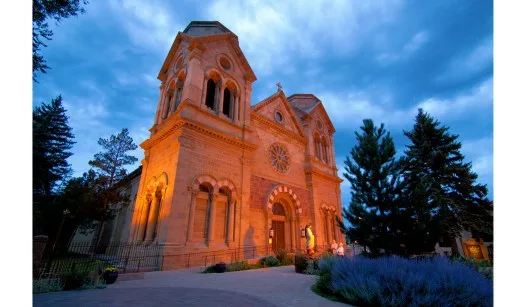Santa Fe, New Mexico, is a city rich in culture and history, where the echoes of the past resonate through its stunning architecture and vibrant art scene. Among its many artistic contributions, Willa Cather’s literary works stand out, particularly her exploration of themes such as faith, discovery, and personal calling. Her novel, “Death Comes for the Archbishop,” offers a profound reflection on the spiritual journey of its characters, set against the backdrop of this enchanting city.
Cather’s narrative is deeply rooted in the landscapes and communities of the American Southwest, making Santa Fe an essential part of understanding her work. The novel tells the story of Father Jean Marie Latour, a French bishop sent to New Mexico in the late 19th century. As he navigates the complexities of his mission, Latour encounters the rich tapestry of cultures and traditions that define the region, all while grappling with his own faith and purpose.
In Santa Fe, visitors can trace the footsteps of Cather’s characters through the city’s historic sites. The Cathedral Basilica of St. Francis of Assisi, with its stunning Romanesque architecture, serves as a focal point for Latour’s spiritual journey. This cathedral, completed in 1886, reflects the blending of Native American and Spanish influences, much like the characters in Cather’s narrative who navigate their own diverse backgrounds.
The city’s art scene also plays a significant role in understanding Cather’s themes. The Georgia O’Keeffe Museum, dedicated to the renowned artist who found inspiration in the New Mexico landscape, highlights the connection between place and personal calling. O’Keeffe’s work embodies the same spirit of discovery that permeates Cather’s writing, showcasing how the natural beauty of the Southwest can inspire profound artistic expression.
Walking through Santa Fe’s Plaza, one can feel the historical significance that permeates the air. This central gathering place has been a hub of community life for centuries, serving as a backdrop for the interactions and conflicts that Cather so vividly portrays in her novel. The blend of cultures in the plaza mirrors the diverse experiences of Latour and his companions as they seek to establish a sense of belonging in a complex world.
As readers engage with “Death Comes for the Archbishop,” they are invited to reflect on their own journeys of faith and discovery. Cather’s characters grapple with their identities and the challenges of their missions, much like individuals today who seek purpose in an ever-changing landscape. The novel encourages introspection and a deeper understanding of what it means to be called to a higher purpose.
Santa Fe itself is a testament to the enduring power of faith and community. The city’s numerous churches, historic missions, and spiritual retreats offer spaces for reflection and connection. Visitors can explore the Loretto Chapel, famous for its miraculous spiral staircase, which symbolizes the unexpected paths that faith can take. This chapel, along with many others, stands as a reminder of the spiritual journeys that have shaped the lives of countless individuals throughout history.
In conclusion, Willa Cather’s “Death Comes for the Archbishop” serves as a poignant exploration of faith, discovery, and personal calling, intricately woven into the fabric of Santa Fe. By following the trail of Cather’s narrative through the city’s historical and cultural landmarks, visitors can gain a deeper appreciation for the themes that resonate in her work. As Santa Fe continues to inspire artists, writers, and spiritual seekers, it remains a place where the journey of faith and discovery unfolds, inviting all to explore their own paths.
